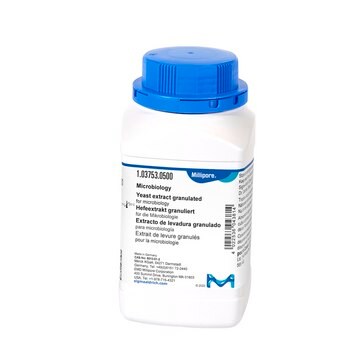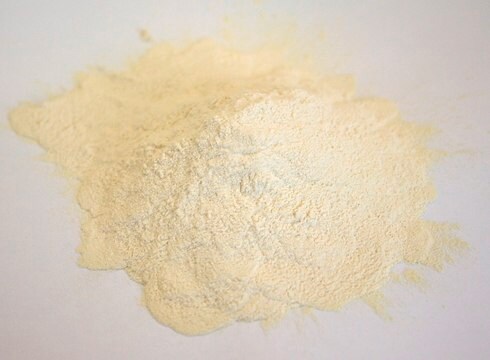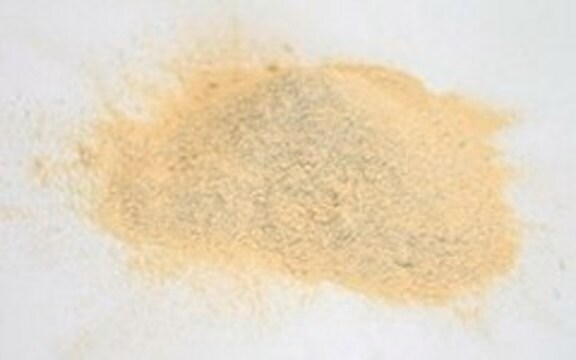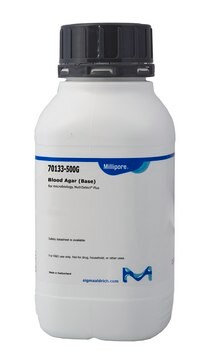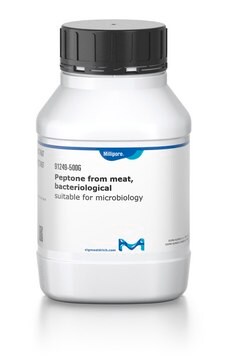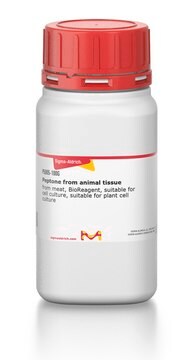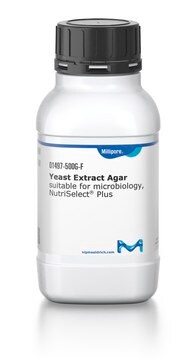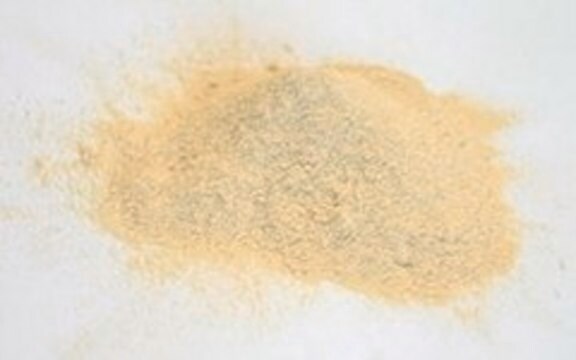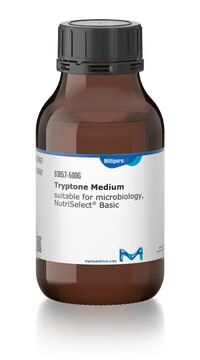Y1625
Yeast Extract
for use in microbial growth medium
Synonym(s):
Select Yeast Extract, microbial growth media, microbial growth medium
About This Item
Recommended Products
grade
for molecular biology
Quality Level
sterility
non-sterile
form
powder
technique(s)
microbiological culture: suitable using
application(s)
agriculture
storage temp.
room temp
suitability
nonselective for Escherichia coli
nonselective for coliforms
InChI
1S/C19H14O2/c20-18(21)11-17-15-8-4-3-7-14(15)16-10-9-12-5-1-2-6-13(12)19(16)17/h1-10,17H,11H2,(H,20,21)
InChI key
GQNBDGXKDJSVGQ-UHFFFAOYSA-N
Looking for similar products? Visit Product Comparison Guide
General description
Application
- complex media for culturing E. coli clones for shake flask experiments
- culture media for culturing bacterial species Gluconacetobacter xylinus
- yeast extract beef (YEB) media for the transformation of Agrobacterium
Other Notes
related product
Storage Class Code
11 - Combustible Solids
WGK
WGK 1
Flash Point(F)
Not applicable
Flash Point(C)
Not applicable
Personal Protective Equipment
Certificates of Analysis (COA)
Search for Certificates of Analysis (COA) by entering the products Lot/Batch Number. Lot and Batch Numbers can be found on a product’s label following the words ‘Lot’ or ‘Batch’.
Already Own This Product?
Find documentation for the products that you have recently purchased in the Document Library.
Customers Also Viewed
Protocols
TE Buffer; Elution Buffer; 10x Ligation Buffer; 0.5 M PIPES Buffer; Inoue Transformation Buffer
Our team of scientists has experience in all areas of research including Life Science, Material Science, Chemical Synthesis, Chromatography, Analytical and many others.
Contact Technical Service
